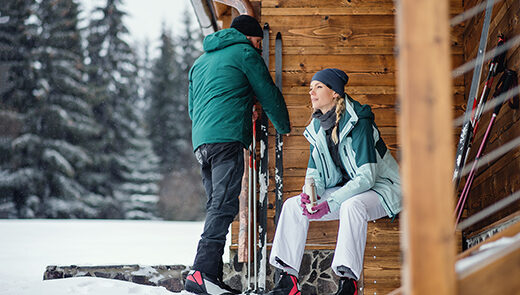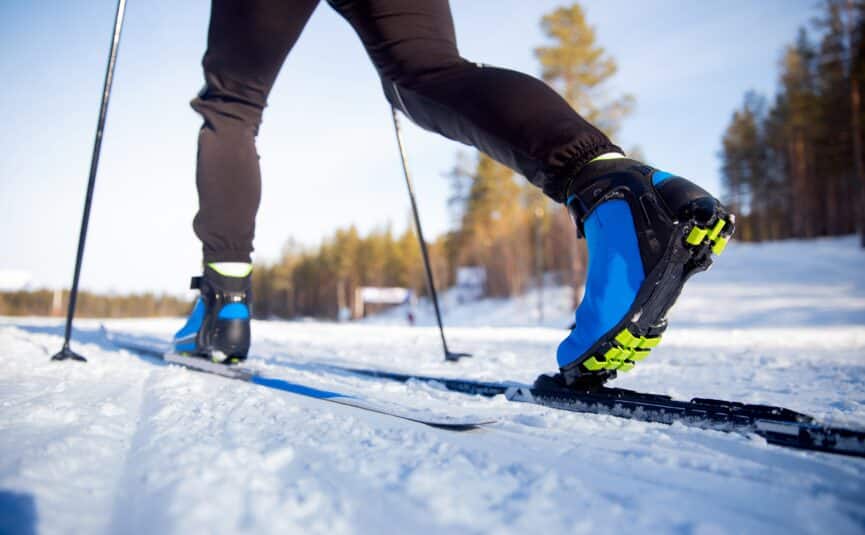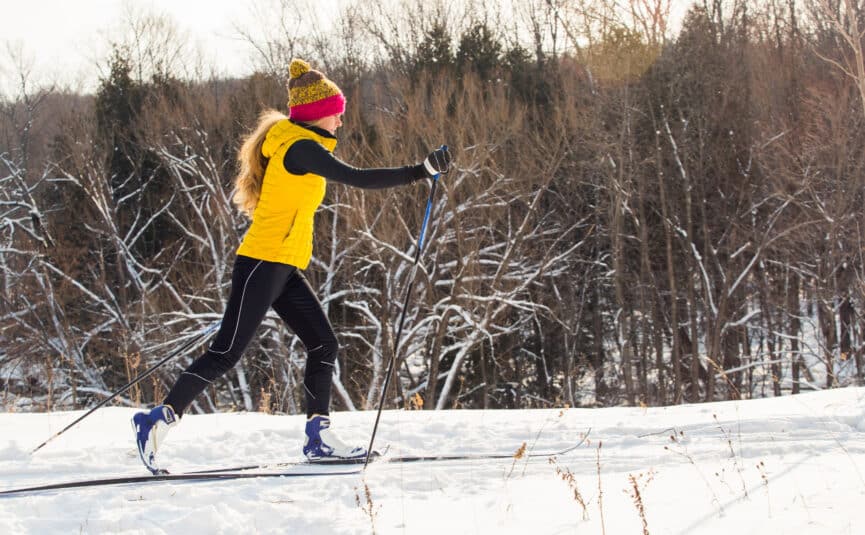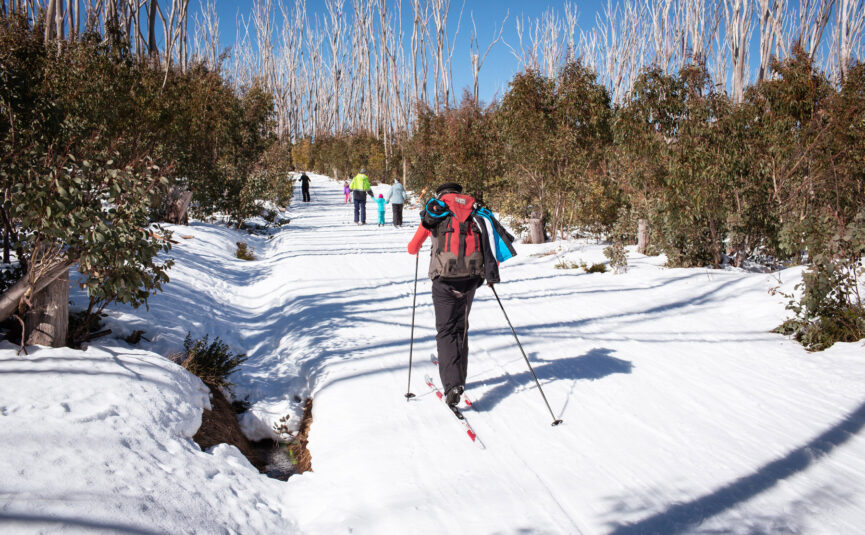Cross-country ski clothing has a difficult task to perform. It must keep you warm in the snow while also allowing you to cool down as you generate body heat from the activity. Seems somewhat contradictory and near impossible, doesn’t it?
Choosing cross-country skiing equipment that protects you from the elements while making sure you don’t overheat is important, and the key is to wear multiple lightweight layers. Doing this allows for both warmth and versatility, as you can add or remove layers as needed.
We’re going to take a deep dive into exactly what you need for cross-country ski gear, but before we do, here is a snapshot of the fundamentals:
- The base layer: Your first layer of clothing needs to dry quickly to handle the sweat you’ll create. As a result, you should opt for synthetic material.
- Middle layers: Your next layers are all about warmth, which is why we recommend fleece or a lightweight jacket.
- An outer layer: Sometimes referred to as a “shell,” your outer layer jacket needs to be breathable, water-resistant, and windproof








